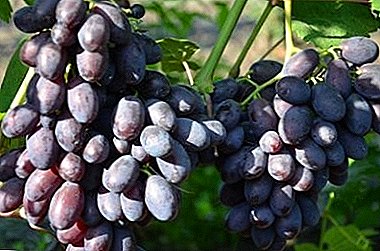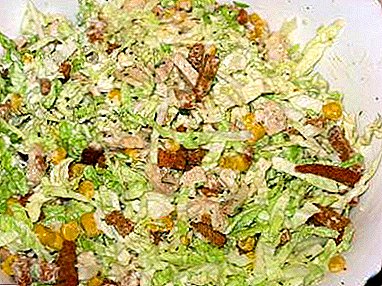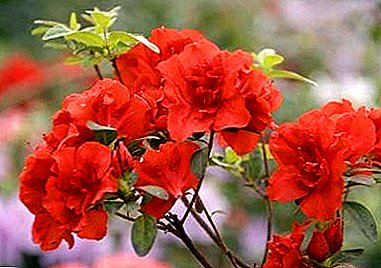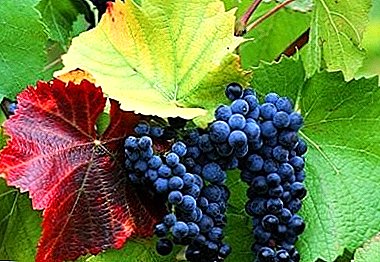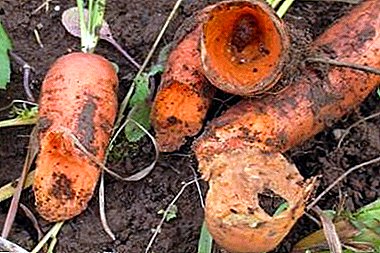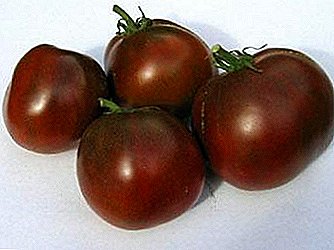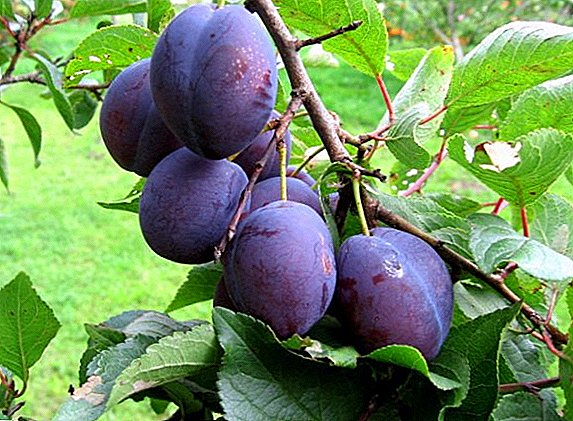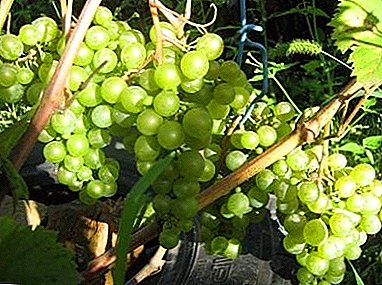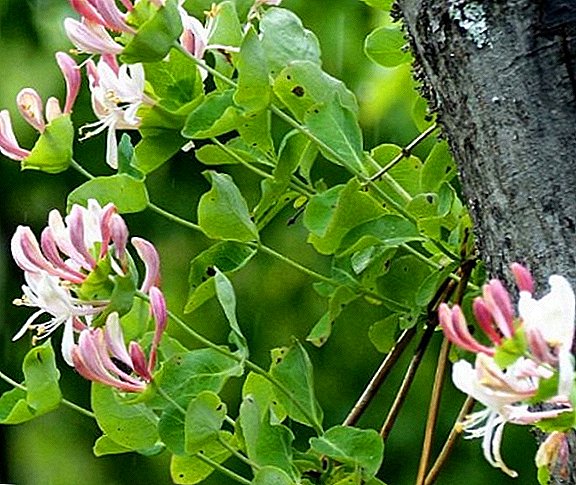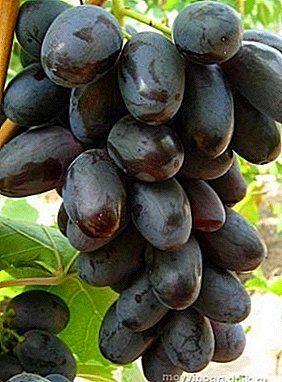
Grapes - an amazing plant. Its fruits have a great scope and benefits for humans. Berries of grapes of different varieties are unique in their taste, structure, size, weight and purpose.
Separate varieties are pleasant and tasty to eat just like that, others produce beverages with and without degrees, and still others are suitable for winemaking and simple consumption.
The article presents a description of the variety "Velika". What properties does he and his fruit have? All the answers to this and other questions can be found in the text of the article.
What kind is it?
From Great grapes do not cook wine, it is eaten fresh. This is a table grape variety. Its taste is pleasant, harmonious. Sweetness and acidity are consistent with each other. Such grapes want to feel fully, and then it is difficult to stop.
Fresh varieties are also good varieties Lily of the Valley, Laura and Zarya Nesvetaya.
Berry varieties of Velika come to taste to almost everyone, and in the markets they are bought up instantly.
Breeding history
Great grapes obtained by crossing two grape varieties. The first French table variety - Alphonse Lavalle. The second table variety from Asia Minor - Karaburnu (Bolgar). Bred in 1987 by Ivan Todorov. Homeland grapes - Bulgaria.
The grapes are great: a description of the variety
 Bush growth quite tall, and grows a bush very quickly.
Bush growth quite tall, and grows a bush very quickly.
Leaves average size, having a rounded shape. Interestingly, in the fall the leaves become beautiful fiery red.
Bunches large. Their weight reaches about 600 grams. The clusters themselves are friable, shaped like a conical or cylindroconical.
Large clusters are different and Delight, Merlot and Original.
Berries - This is a distinctive feature of grapes. The color of berries can be from noble dark red to deep purple, almost black. The size of the berries is very large, unlike most other varieties. The weight of one berry reaches 14 grams on average. The shape of the berries is elongated, elongated, not very pointed to the top.
Pulp crispy The skin is thick, but easily eaten. Excellent accumulates sugar. The taste of the berries vaguely resembles plum or prunes.
Specifications:
- The grapes are very early maturing;
- In its homeland, Bulgaria, it ripens in late August. In Russia, depending on the area and natural conditions, maturation occurs in late July - late August;
- On average, the ripening period of grapes is 130-135 days;
- Resistance to cold is average, withstands up to -22 ° C;
- Productivity grapes are very happy. Harvest from one bush on average 9-10 kg. From one hectare about 350 centners of berries.
Among the varieties with an early ripening stand Red Delight, Pleven and Muromets.
Important: Due to the rapid growth of grapes, it is recommended that gardeners form a plant as early as the year of planting. The most successful type of forming is a two-plane trellis.
A photo
Photos of grapes "Great:




Diseases and pests
The biggest minus of the Great variety of grapes is weak resistance to diseases.
If time does not detect and cure the disease, the harvest is gone. Therefore, it is recommended to treat the plant before signs of disease appear.
For this fit these fungicides: Abiga-Pik, Albit, Bayleton, Ordan and others.
The following is a list of grape diseases and drugs to combat them:
- Mildew. It is manifested by the appearance of numerous yellowish spots.
- Oidium. Manifested by the appearance on the shoots of plaque, mold.
- Alternaria External manifestation is similar to oidium. Shoots are covered with brown and gray spots.
- Grape anthracnose. When the manifestation appears brown dry spots on the leaves.All this - fungal diseases. Preparations for the fight against fungal diseases - fungicides.
- Gray rot. The disease is difficult to cure, the recommended medications: foundation, euparin.
 Pests also do not bypass this grape. The most terrible pest is phylloxera, or aphid-scavenger. It begins the destruction of grape bushes from the roots, thereby reducing the yield, and later completely killing the bush.
Pests also do not bypass this grape. The most terrible pest is phylloxera, or aphid-scavenger. It begins the destruction of grape bushes from the roots, thereby reducing the yield, and later completely killing the bush.
Methods of dealing with phylloxera:
- the destruction of already infected bushes;
- burning leaves (if the pest is on them in small quantities);
- planting grapes in sandy soil;
- flooding of bushes with water for several days;
- use of drugs (Fastak, Aktellik, Kinmiks, Fozalon).
Among the diseases often affecting grapes can be identified chlorosis, bacteriosis, rubella and bacterial cancer. You can get acquainted with their signs and learn about preventive measures in separate materials of our site.
The second dangerous enemy of the grapes is the wasps. During the ripening of berries, they dig at them and suck out all the flesh, leaving only the skin. On the smell of grapes, already "treated" wasps, other insects also flock. So you have to fight wasps. There are several ways to do this:
Poison bait for wasps:
The easiest and probably the most effective way to destroy wasps. For it you need to take any product sweeter than your grapes. Add to it odorless insecticides. After spreading the bait near the hive or near the grapes.
We poison wasps in the hive itself:
It's very simple, but quite dangerous. When all the wasps have returned to the hive, we inject poison into it.
Smoke and destroy wasps:
This is the most dangerous way, you need to do it with great care and protection.
With the help of smoke, wasps smoked from the hive. Some will immediately fall to the ground, and some will attack you. Wasp fallen on the ground must be crushed mercilessly.
 Also destroy the berries during their ripening birds. In addition, birds can serve to attract wasps. These animals certainly do not need to poison.
Also destroy the berries during their ripening birds. In addition, birds can serve to attract wasps. These animals certainly do not need to poison.
To protect the berries from the birds set the grid, which does not give any bird to get to the grapes and spoil your harvest.
As a result of the article we have a general idea of the variety of grapes Velika. Its merits can be attributed to the color and size of the berries, their taste, good yield, early ripeness.
But there is a drawback, and it is very strong. Grapes have a very weak resistance to diseases. It requires care and regular prophylaxis to prevent the disease and the death of the plant.
But this proves once again that the variety is great beautiful and tasty. Such varieties often have a pleasant, harmonious taste. And resistant varieties rather not stand out taste. Against pests, this variety is also unstable. But here also helps prevention and timely treatment.
The varieties Rochefort, Platovsky and Athos also have a magnificent and harmonious taste.
For the sake of such a clean, pleasant taste, you can work and carefully care for grapes, protecting from all diseases and pests.


